
Founding LFE in 2006 - what can we do to speed up mesh generation?
Temperature of a V-engine, from Binner, Reister et.al.
"Aspects of Underhood Thermal Analysis"
Gallery
0. speed up mesh generation (2006)
1. recursive car(2019)
2. bike (2021, ANSYS)
3. disc brake assembly (2021, MARC)
4. The Blue Crab (2023)
NAFEMS conference (2021) - Reliable Meshing of 10 000 Parts
1. recursive car (2019)
A 1:20 copy of the car (= toy car) is inside the car, and a 1:20 copy of the toy car ...
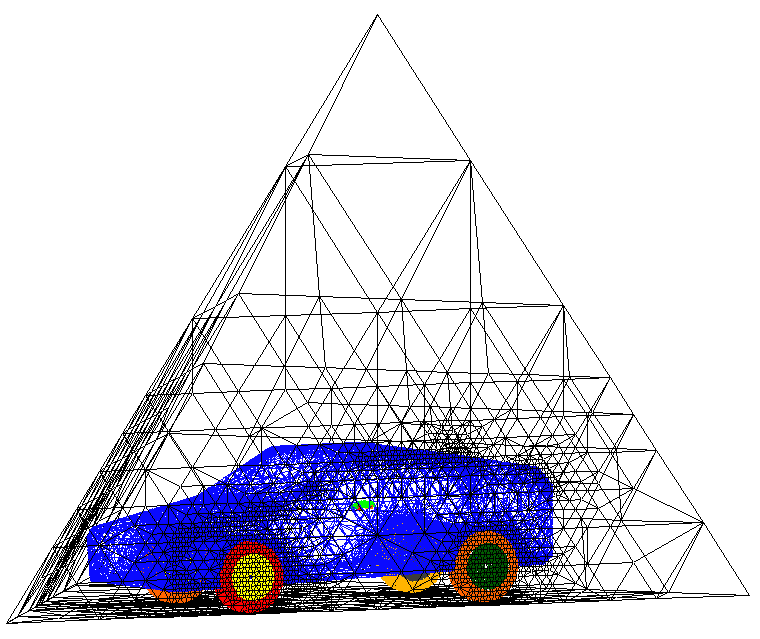
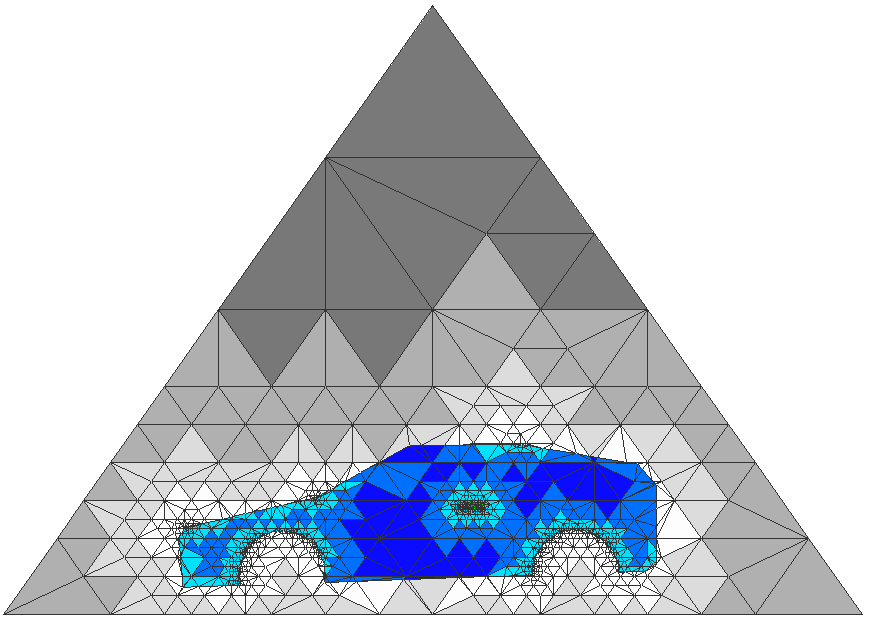
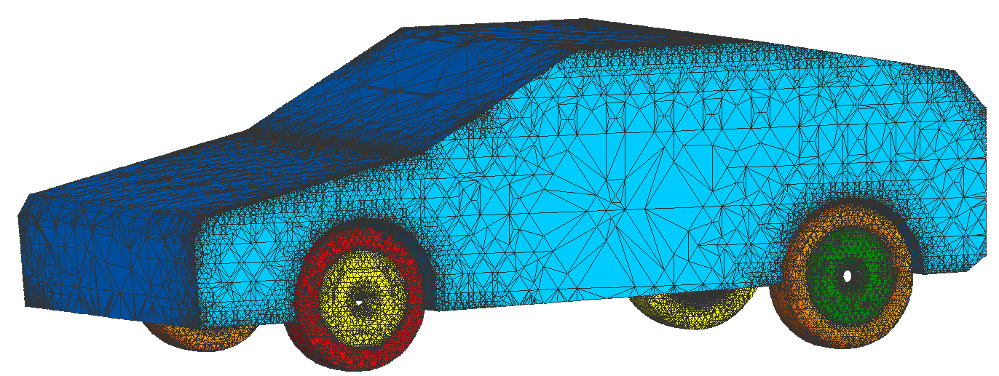

download MMT at Nafems Conference
2. bike (2021, ANSYS)


These displacements were calculated requiring RESOLUTION 20.0 globally and RESOLUTION 2.0 locally for the front brake parts. The mesh is intentionally coarse to demonstrate that physics already works in this stage.
3. disc brake assembly (2021, MARC)
3.0 heat transfer, thermal expansion
the loss of a car's kinetic energy defines the thermal load of the disc brake.
initial velocity = 150 km/h, deceleration 10 m/sec**2, mass = 1500 kg
| tetras | 228987 |
| average quality | 0.306 |
| % quality < 0.05 | 3.68 |
| worst tetra | 4.61e-5 |
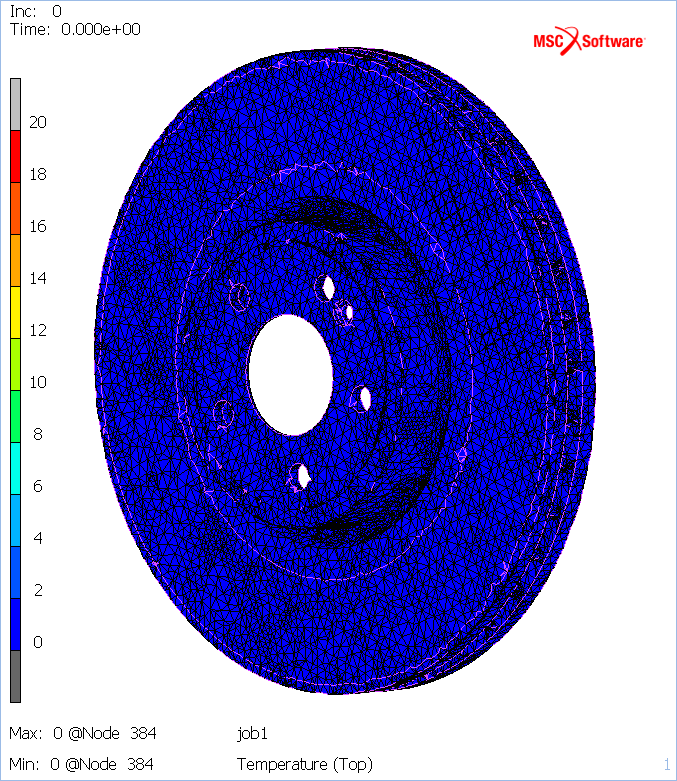
3.1 Eigenforms of the disc brake
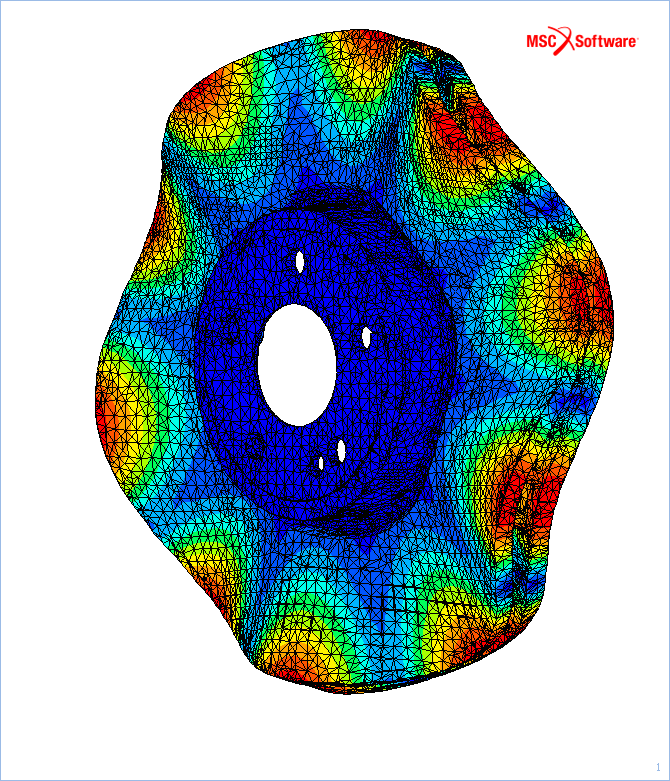
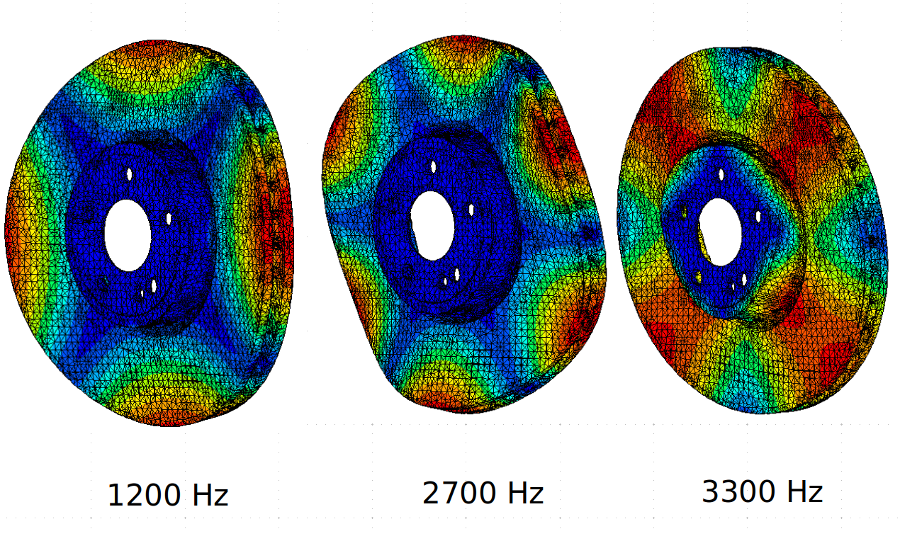

3.2 Repeated braking
0-4.. sec deceleration from 150 km/h to 0 km/h
4-40. sec stop and acceleration to 150 km/h
40-44 sec deceleration from 150 km/h to 0 km/h
44-80 sec stop and acceleration to 150 km/h

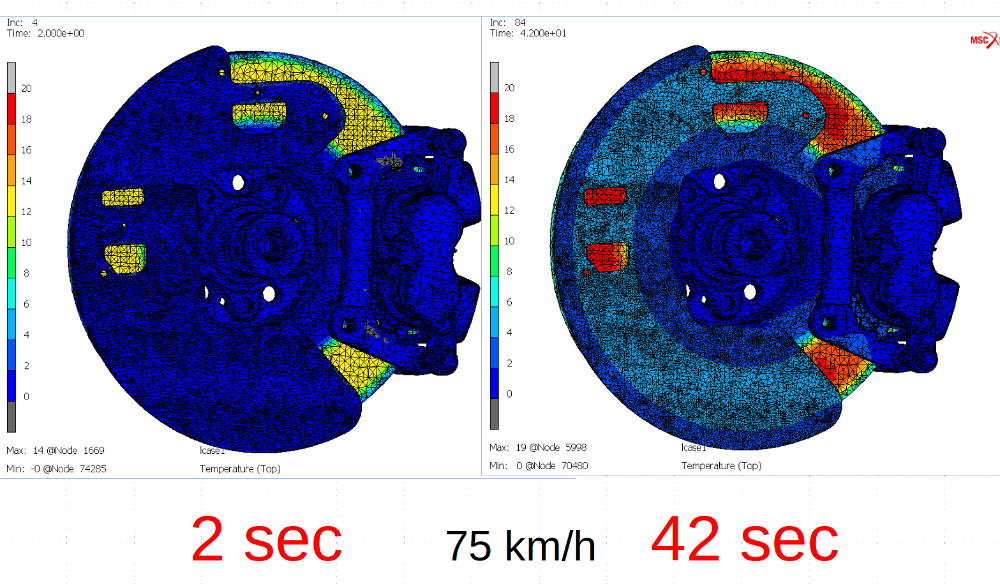

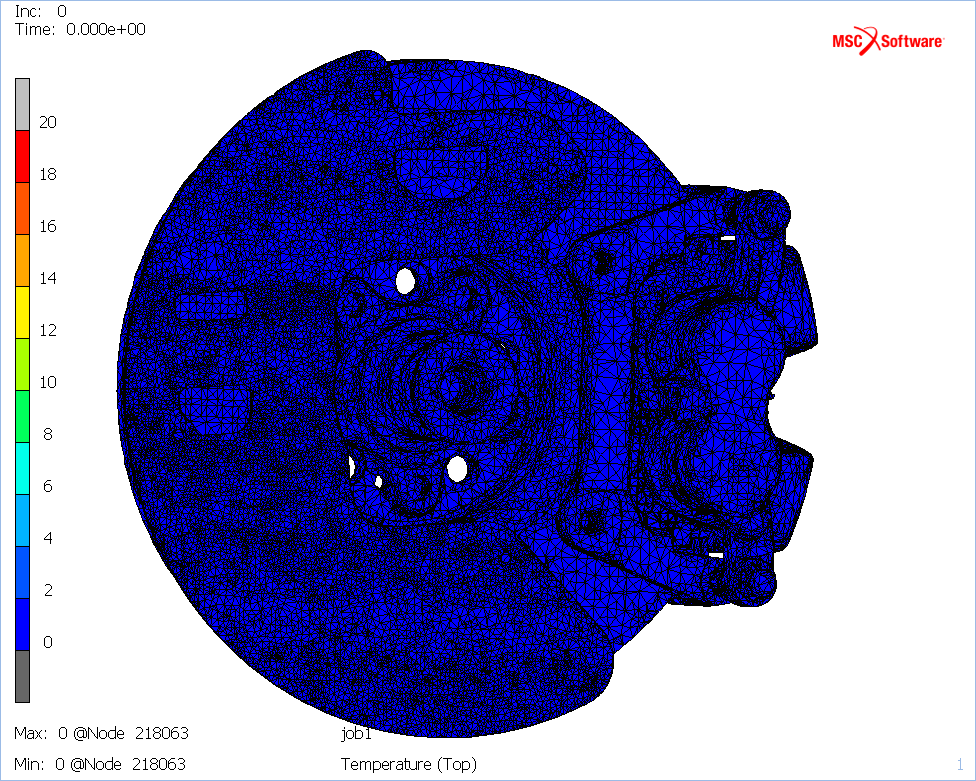
3.3 Imprints ( = contact area ) are the common faces between parts

4. The Blue Crab (2023)


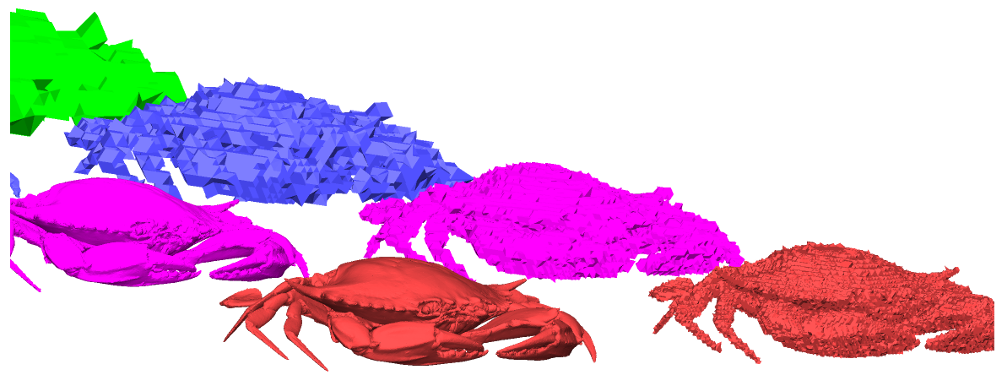

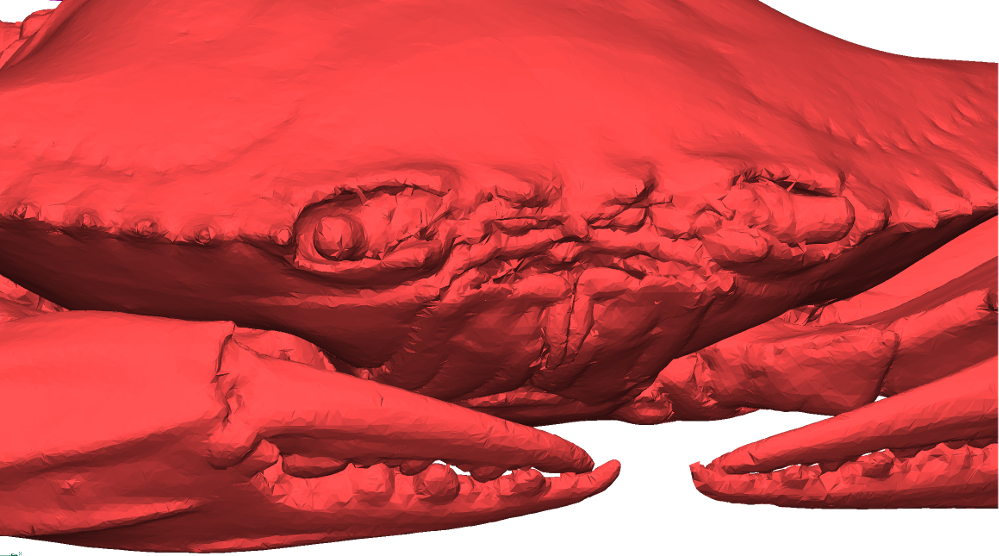
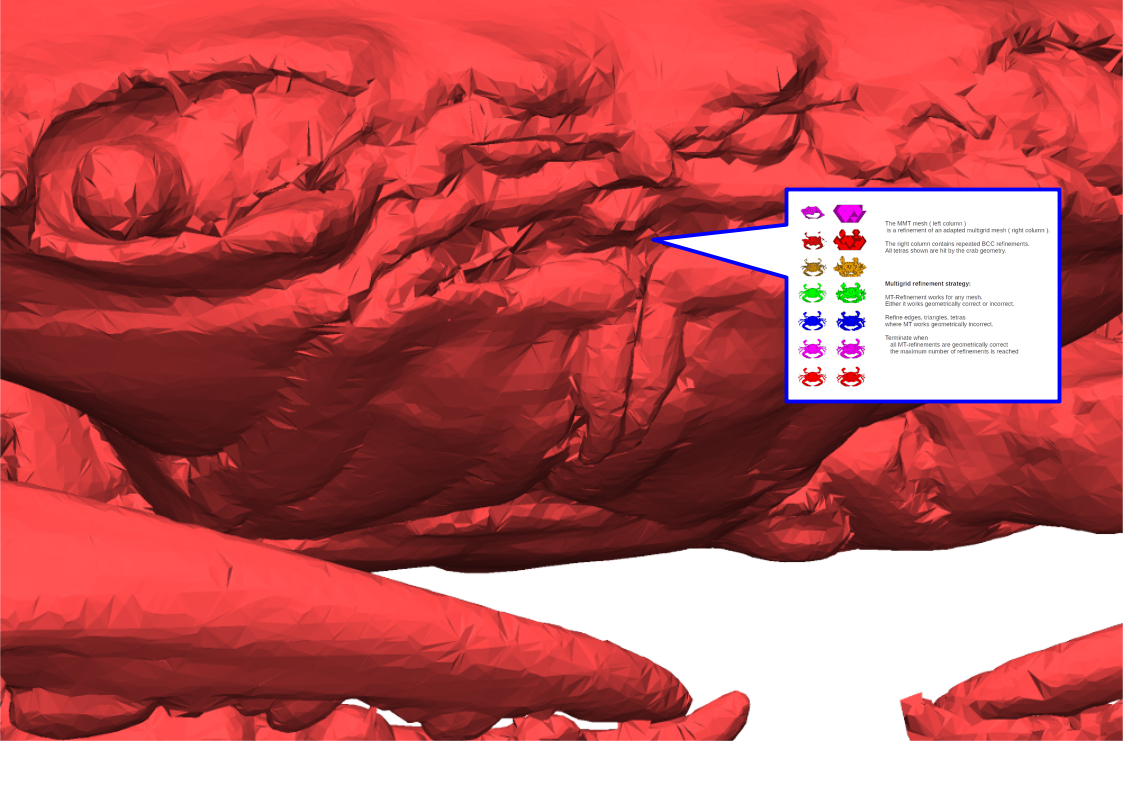

HOME